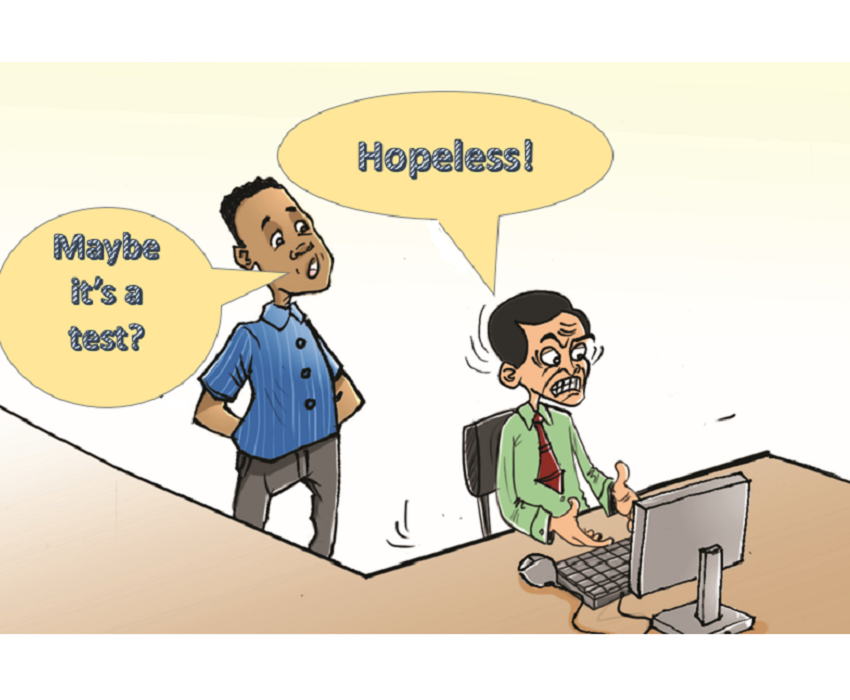Hopeless Tenders
September 17th, 2019
I hate tenders. But, as a company, you have to deal with them. In theory, it is the best and most transparent way for projects and organisations to select suppliers. This works fine for products with clear specifications, like buildings, machinery, etc. Tendering creative assignments is not so easy. How do you specify the desired quality of design?
Tenders for creative products like videos, brochures and e-learning modules, should be written so that we can be compared to our competitors in a fair way. The best way is to ask us to respond to a simple, well-defined imaginary case. This could even be done in the form of a role-play or a demonstration.
In the 4.5 years that we have been operational in Rwanda, we have only had one employer use this “imaginary case method”. We won that tender. Another employer did not use a hypothetical case but asked the three remaining companies to make a start with the requested design work. We were invited to three different rooms and each party worked for half a day. The employer then realised that they could not compare the work. The assignment was too complicated to complete in half a day. Next, the employer asked us all to do another design assignment, this time for a full day. There we stopped it. We said that we do not work for free and quit.
Writing a tender for creative work is not easy. We often see tender documents written as riddles: what do you think we need in our situation? This leaves us with the challenge of guessing what type of solution the employer has in mind, and what their budget might be. Very unsettling. Phoning for more information is a challenge, too. The telephone numbers listed in adverts are not always operational and, when you do get someone on the line, they don’t always know that there is a tender out, let alone what it’s about.
Some tenders are completely the opposite. Even for small assignments, like making a video or designing leaflets, we have to work through a 30-page document, which includes at least 10 forms to fill in. The description of the work is often no more than four lines but written in very legal language. In addition to our proposal and CV, we must deposit a fee, include a bank slip from our bank account, a portfolio of similar products we have made, provide stamped clearances from the tax authority and social security service, as well as a criminal record clearance certificate from the Ministry of Justice. Responding to such a tender requires nerves of steel and a lot of time. Unless we really want the assignment, we don’t bother. Once we paid RWF 20,000 for a tender on capacity building. When we received the documents, they turned out to be about the supply of notebooks. Pay for tender documents? Never again.
Thankfully, despite the bureaucracy, and after we’re done raging and practicing yoga positions, we do usually get the contract. Perhaps no one else wanted to jump over all those hurdles to apply, or maybe we chose the right battles to fight. Once we get a contract, the people we work with are often surprisingly nice and competent. Not bureaucrats at all. Perhaps they work in different departments to the people who write the tenders?
Jan Willem Eggink

